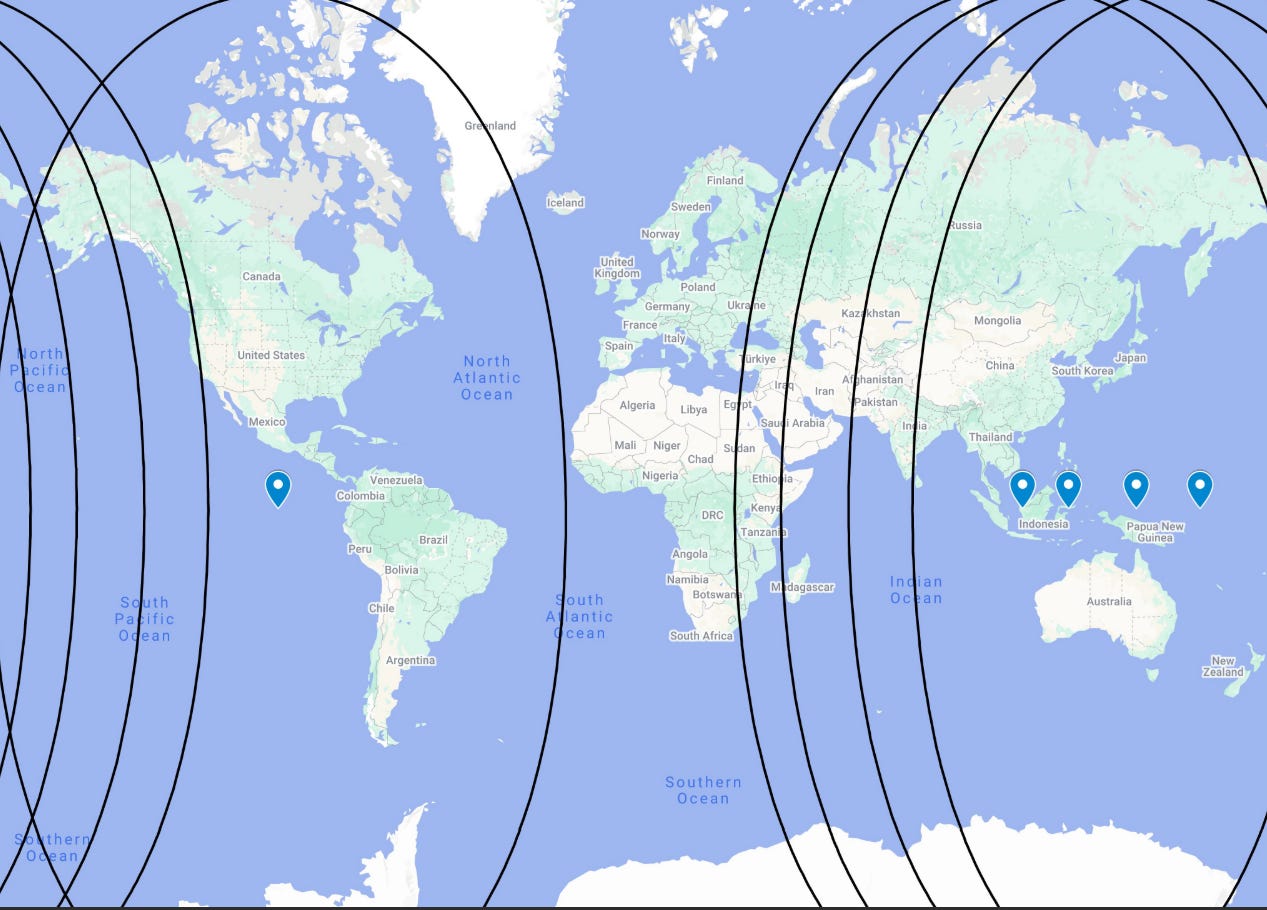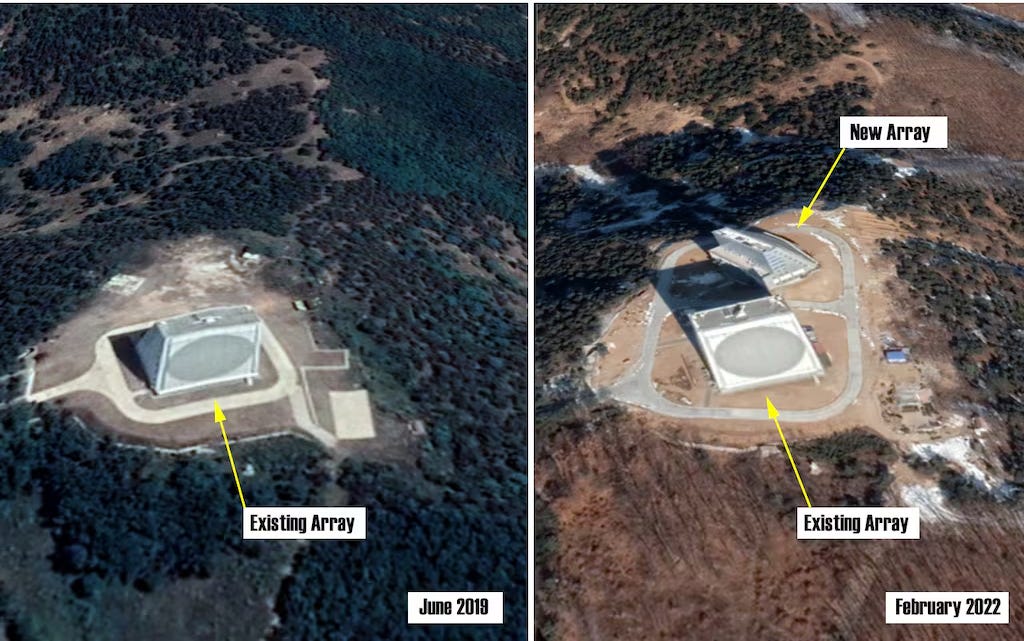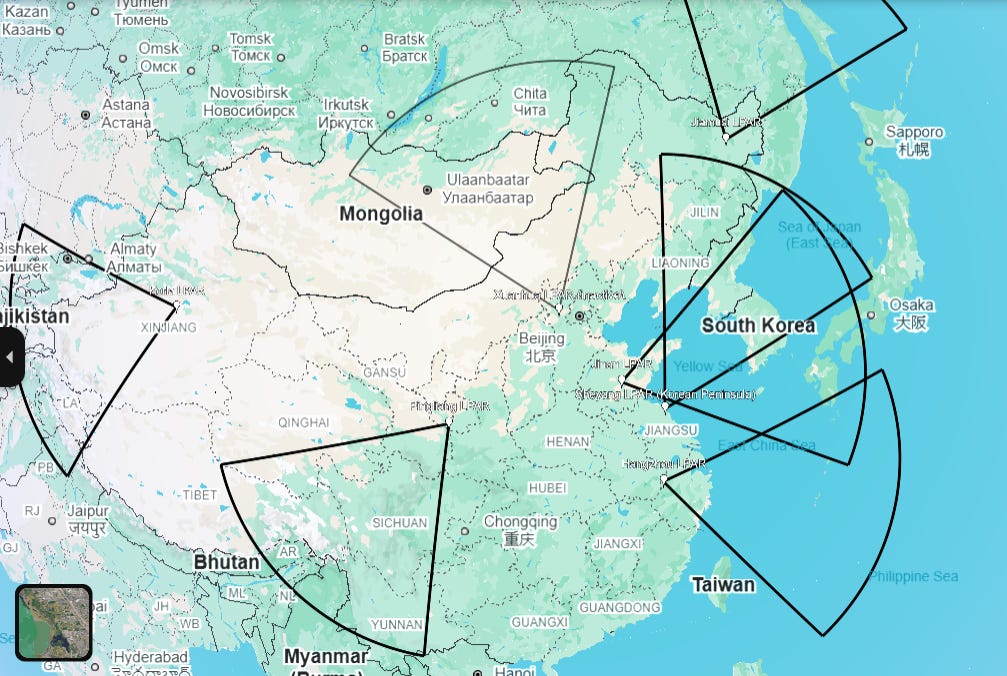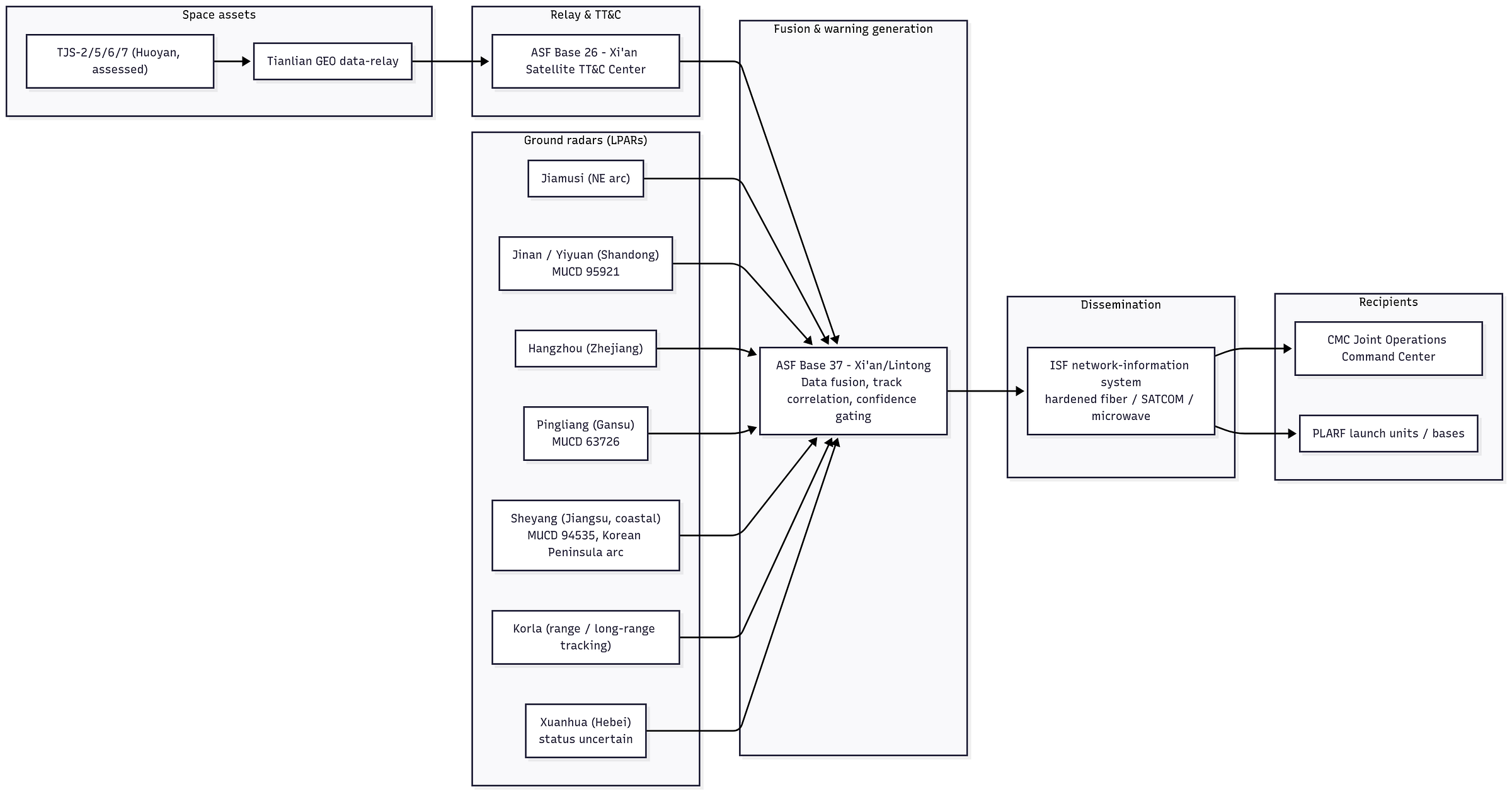China's Nuclear Early-Warning Architecture
Satellites, radars, and command networks behind early-warning counterstrike.
Following my last post on China’s nuclear command and control (C2), I want to turn to the other side of the C4ISR coin: intelligence, surveillance, and reconnaissance (ISR). Specifically, let’s look at the network of sensors and systems China is building to provide early warning of a nuclear attack
For decades, China’s nuclear posture emphasized assured retaliation. A small, survivable force was designed to absorb a first strike and retaliate later, which did not require real-time attack assessment. Today, Beijing is massively expanding its nuclear arsenal and is moving toward an early-warning counterstrike posture (预警反击), known in the West as launch-on-warning, which entails authorizing a retaliatory launch once an adversary’s missiles are confirmed in flight but before impact.
Reorganizing for Early Warning Counterstrike
A functional early-warning system requires a command structure built for speed. The PLA’s April 2024 reforms were pivotal: the Strategic Support Force was disestablished, space missions were consolidated in a new Aerospace Force (ASF), and the Information Support Force (ISF) was established under the CMC to harden and manage joint information infrastructure. These changes flattened hierarchies and streamlined the flow of data from sensor to decision-maker.
The ASF is the central hub for military space operations and the successor to the SSF Space Systems Department. Within the nuclear early-warning mission, two formations are paramount:
Base 37 (Early-Warning Base): Headquartered in Lintong District, Xi’an, this formation leads ballistic-missile early warning and space situational awareness. It fuses data from space-based sensors and large phased-array radars into a coherent threat picture. Its mission is dual-use, since tracking space objects and ballistic trajectories supports both nuclear and conventional operations.
Base 26 (Xi’an Satellite TT&C Center): This center conducts telemetry, tracking, and command (TT&C) and mission operations for military satellites, including geostationary platforms relevant to early warning. It maintains satellite health, executes station-keeping and maneuver plans, and ensures reliable data relay into ground processing chains.
Supporting both organizations, the ISF serves as the network backbone, managing hardened fiber-optic routes, secure satellite links, and microwave relays that connect ASF sensors to command centers. Its job is to deliver warning data with minimum latency and maximum integrity to support nuclear and high-end conventional C2.
Early Warning Sensor Architecture
Chinese sources describe the PLA’s early warning system as air–space integrated and space–ground integrated (空天一体、天地一体)—terminology used in PLA/state media to denote tightly coupled space sensing and ground networks.
Space-Based Infrared Detection
The first line of defense is in space. China has deployed a constellation of space-based infrared early-warning satellites designed to detect the intense heat signature of a ballistic missile’s rocket motor during boost.
The primary system is widely referred to as Huoyan (火眼, “Fire Eye”). Many of these satellites launch under the cover designation Tongxin Jishu Shiyan (TJS). Open assessments identify TJS-2, TJS-5, TJS-6 and later additions as carrying early-warning payloads. They occupy geostationary orbit (GEO) to provide persistent stare over assigned longitudes. Persistent coverage of North American launch areas is provided by Western-hemisphere GEO placement such as TJS-7 near ~99°W, while East-hemisphere spacecraft cover Indo-Pacific arcs.

The infrared payloads are developed by the Shanghai Institute of Technical Physics (SITP) of the Chinese Academy of Sciences, which leads high time-sensitivity space-based detection. Public material supports multi-band mid-to-longwave IR sensing optimized for plume detection against the cold space background. In practice, satellites can detect launches within tens of seconds of ignition. To minimize downlink latency, detection data rides Tianlian GEO relay links for near-real-time delivery into ground processing chains.
Ground-Based Radar Tracking
Once a launch is spotted from space, the ground layer takes over. This tier is built around large phased-array radars (LPARs) designed to acquire and track ballistic missiles in midcourse. Electronically steered beams enable near-instantaneous, multi-target tracking.

The PLA is building a radar fence with overlapping fields of view to cover multiple threat axes. Key assessed sites include:
Jiangsu Sheyang (coastal): A coastal LPAR covering maritime approaches; open sources place it with a PLAAF unit.
Korla, Xinjiang: A major ABM/ASAT test and tracking complex that also supports long-range missile tracking.
Jiamusi, Heilongjiang: A large LPAR in the northeast oriented to the North Pacific and Arctic approaches, the primary vector for U.S.–China ICBM trajectories.
Jinan, Shandong: An inland LPAR node associated with national missile-warning coverage.

These radars are analogous in scale and function to U.S. early-warning arrays such as UEWR/PAVE PAWS. Public Chinese sources do not disclose operating bands; open analyses assess very long detection ranges suitable for ICBM-class trajectories and useful sensitivity to large, low-observable aircraft at long range. The same Jiamusi radar that would track an American ICBM can also contribute to long-range air surveillance.
From Detection to Decision
Operational effectiveness hinges on the nuclear command, control, and communications process, a race to compress the decision cycle into the flight time of an incoming missile. For a trans-Pacific ICBM, flight time is on the order of 30 minutes. A plausible sequence follows:
Phase 1: Detection (T+0 to ~T+3 minutes): Within tens of seconds, one or more Huoyan satellites detect the boost-phase plume. Detection data is relayed via Tianlian for near-real-time ingestion at ground centers.
Phase 2: Fusion and characterization (~T+2 to ~T+8): Base 37 fusion correlates GEO detections and LPAR tracks, classifies objects, and refines trajectories; automated tools reduce latency. Once confidence thresholds are met, the system generates a formal strategic warning.
Phase 3: Dissemination and decision (~T+5 to ~T+15): The warning message moves over ISF-managed networks to the CMC Joint Operations Command Center in Beijing. Senior officers conduct a rapid assessment and brief the CMC Chairman. Depending on geometry and warning time, the Chairman may have single-digit to low-double-digit minutes to authorize a retaliatory launch.

Challenges and Systemic Risks
The enterprise carries real risks. China’s operators lack the decades of experience and close calls that shaped U.S. and Russian procedures. False alarms from sensor artifacts or data handling remain possible. Reliance on AI for speed introduces automation-bias risk, where commanders under stress accept a flawed machine assessment and precipitate a launch on bad data.
A further challenge is the difficulty of tracking hypersonic glide vehicles, whose depressed trajectories and high maneuverability are less visible to the traditional radar and satellite architectures designed for predictable ballistic arcs. While China is developing its own hypersonic capabilities, defending against them remains a universal challenge that complicates warning timelines
A deeper vulnerability stems from the entanglement of nuclear and conventional C4ISR. The same national LPARs that support nuclear warning also support long-range air and maritime surveillance. The same ASF and ISF formations manage networks and data for both missions. In a conventional conflict, an attack on these dual-use nodes could be misread as the opening move of a disarming strike.
This creates a plausible pathway for inadvertent escalation. In a conventional conflict, the United States would have powerful military incentives to neutralize dual-use C4ISR systems to protect its forces. From Beijing’s perspective, however, a large-scale conventional attack on its strategic ISR infrastructure could be indistinguishable from the opening salvo of a disarming nuclear first strike.
China is on a clear trajectory to field a fully operational early-warning counterstrike capability by the end of the decade. This strengthens deterrence by complicating an adversary’s first-strike calculus. It also creates a faster decision environment and a new pathway for miscalculation because nuclear and conventional warning are intertwined.
Managing that risk requires clear understanding of capabilities and intent and renewed attention to crisis management. As China’s system matures, the need for robust, reliable crisis communication channels between Washington and Beijing—specifically to deconflict sensor readings and prevent misinterpretation during a conventional conflict—becomes more critical than ever.
That wraps up our look at China’s evolving nuclear C4ISR architecture. As always thanks for reading, and please subscribe to Orders and Observations, share the newsletter, and follow me on X/Twitter and LinkedIn if you’d like to connect or collaborate.


